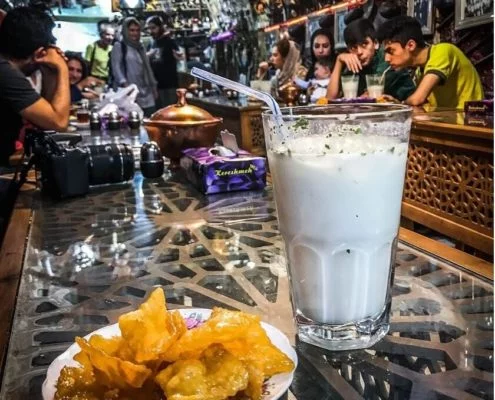Have you ever tasted the culture and history of a nation? What would be more memorable than the taste of a nation with a multiplicity of flavors and savors in their dishes? The perfect combination of fresh herbs, the sweet-sour of pomegranate, the smell of saffron, barberry, and nuts, along with the fresh aroma of rice, makes you fall for the charming chant of this orchestra. It’s only the magic of Iranian cuisine that gathers all these incredible tastes together and represents one single culture and history.
Even one typical dish of Persian cuisine found in almost all the restaurants around Iran can have various types. Either minced lamb or chunked chicken, kebabs are the most favorite among the Iranians. Persian food culture and etiquette give a Persian touch to kebabs. The way Persian people tend to serve and eat it is their mystery to enjoy their meal. The smell of freshly grilled meat combined with hot fresh Nān-e Sangak or flatbread and a plate of savory herbs and onions will definitely tempt you as it did to Florian, who believes that the significance of Persian cuisine lies in its special Persian touches:
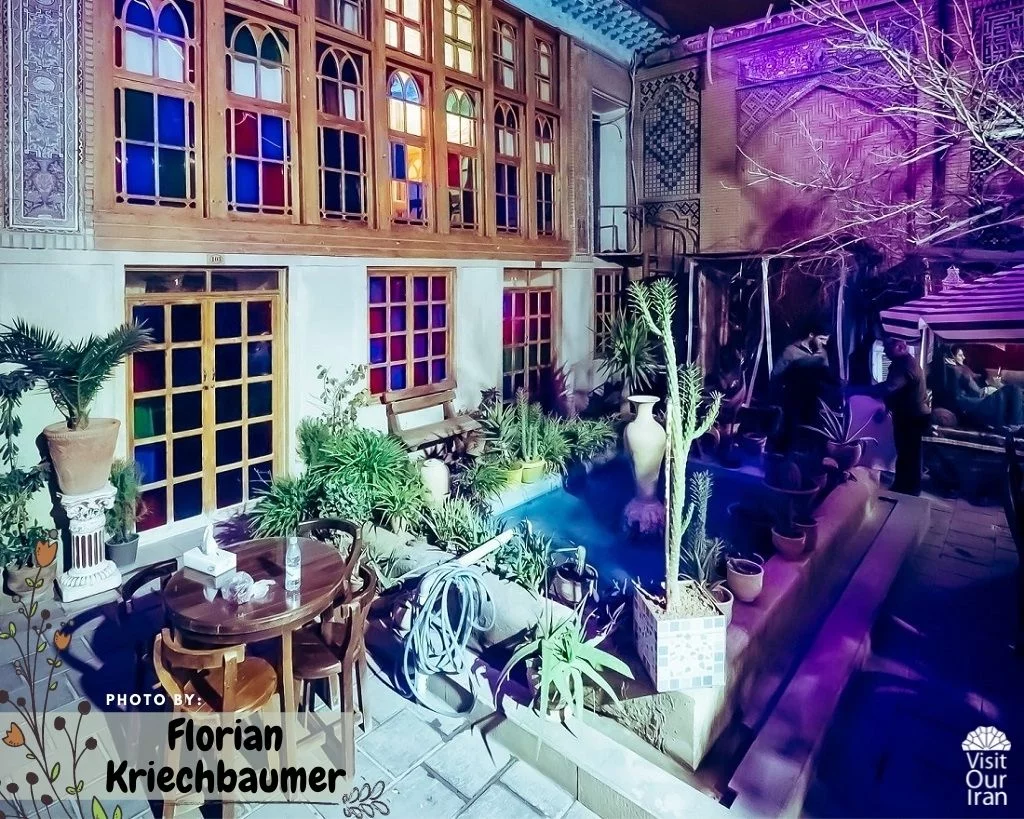
The kebabs were delicious but I also really liked just the simple white cheese with fresh bread, everything was so fresh.
From Florian Kriechbaumer
Want to learn more about the Iranian Cuisine and its flavorful magics? Check out all of our Food and Culinary Tours and Join us on our culinary tours and try various tasty foods and drinks.
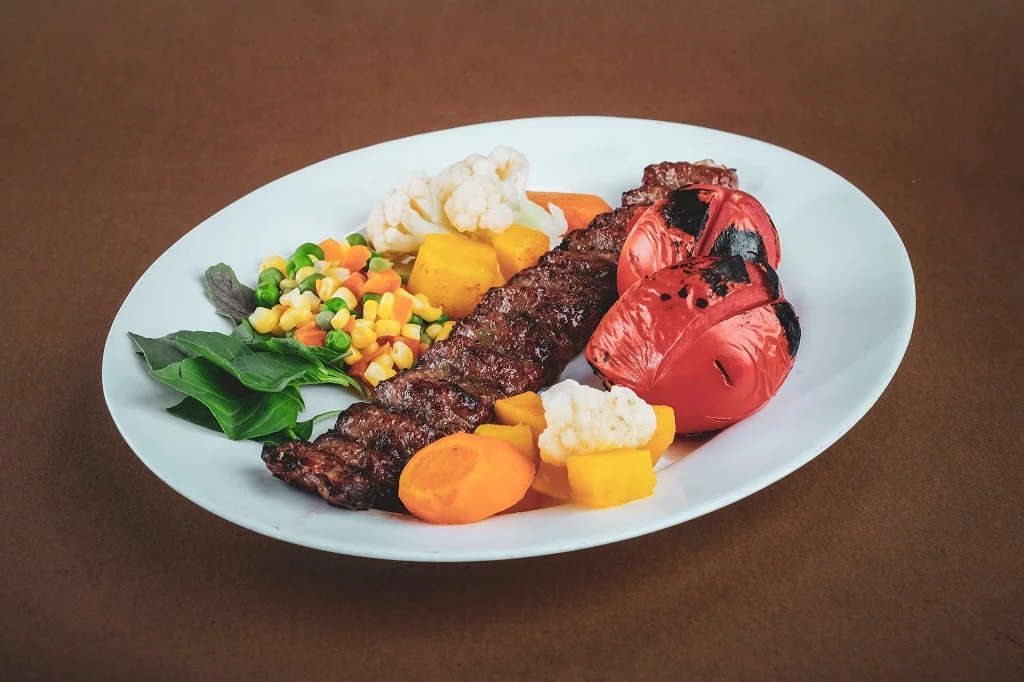
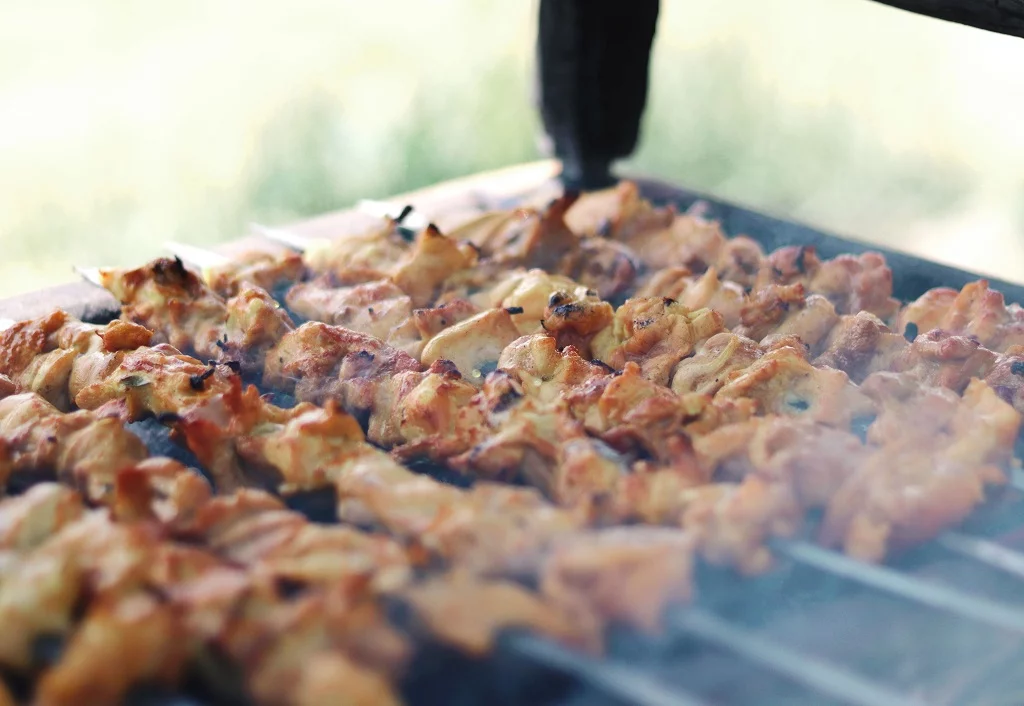
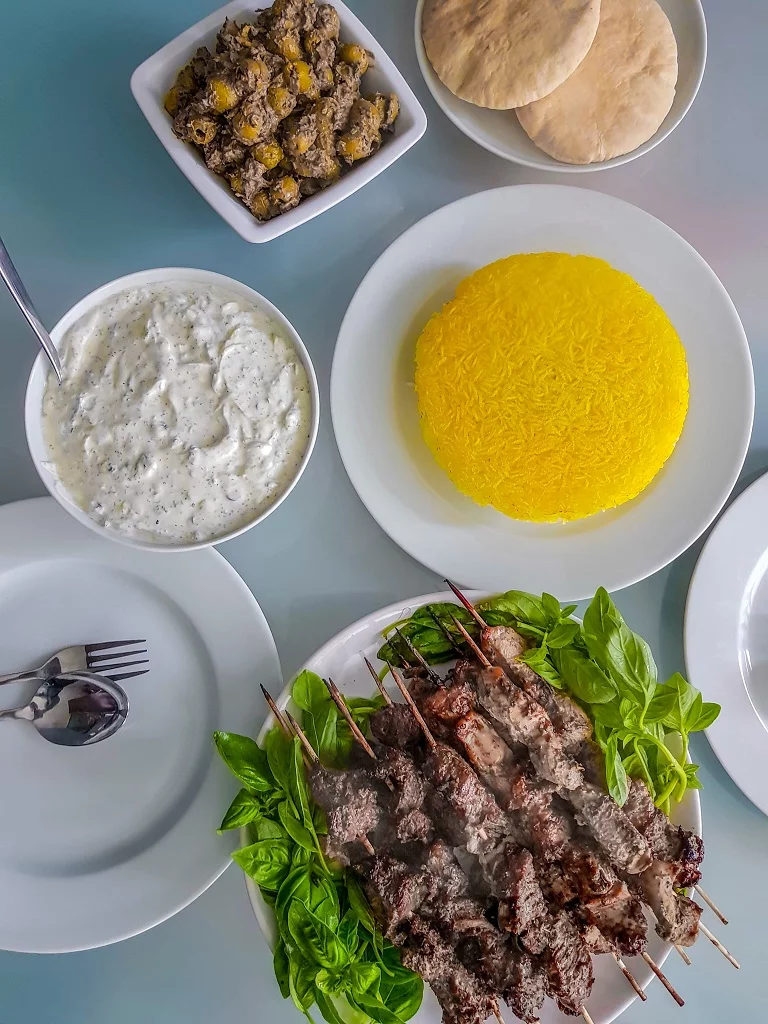
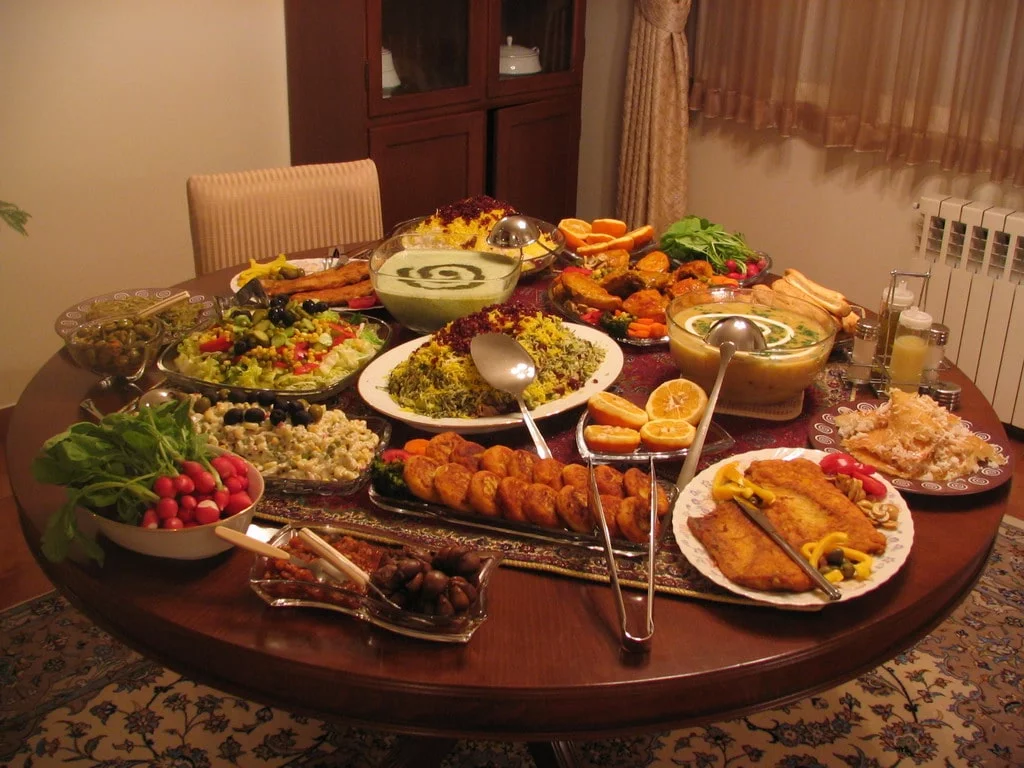
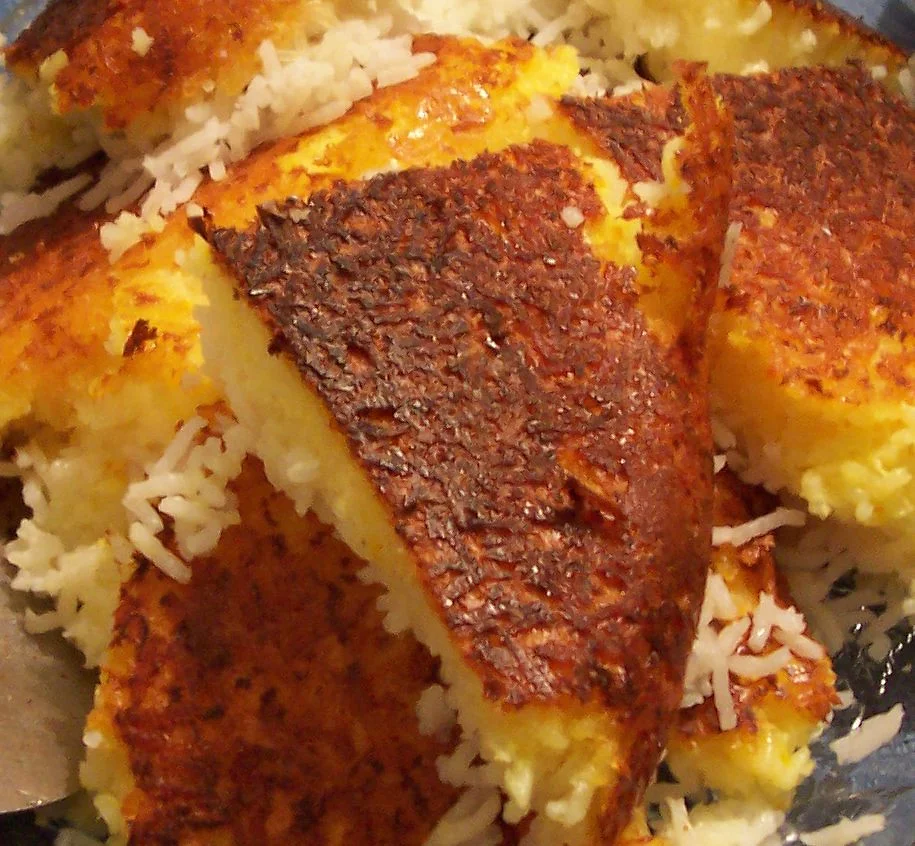
You might have tasted kebab in many other countries or even in Persian neighborhoods of other countries. Still, you’ll not know about the difference in their tastes until you have not tasted the original Persian version. Jacki has the same idea both for kebabs and Ghormeh sabzi; a vegetable stew which is believed to be another miracle of Persian cuisine:
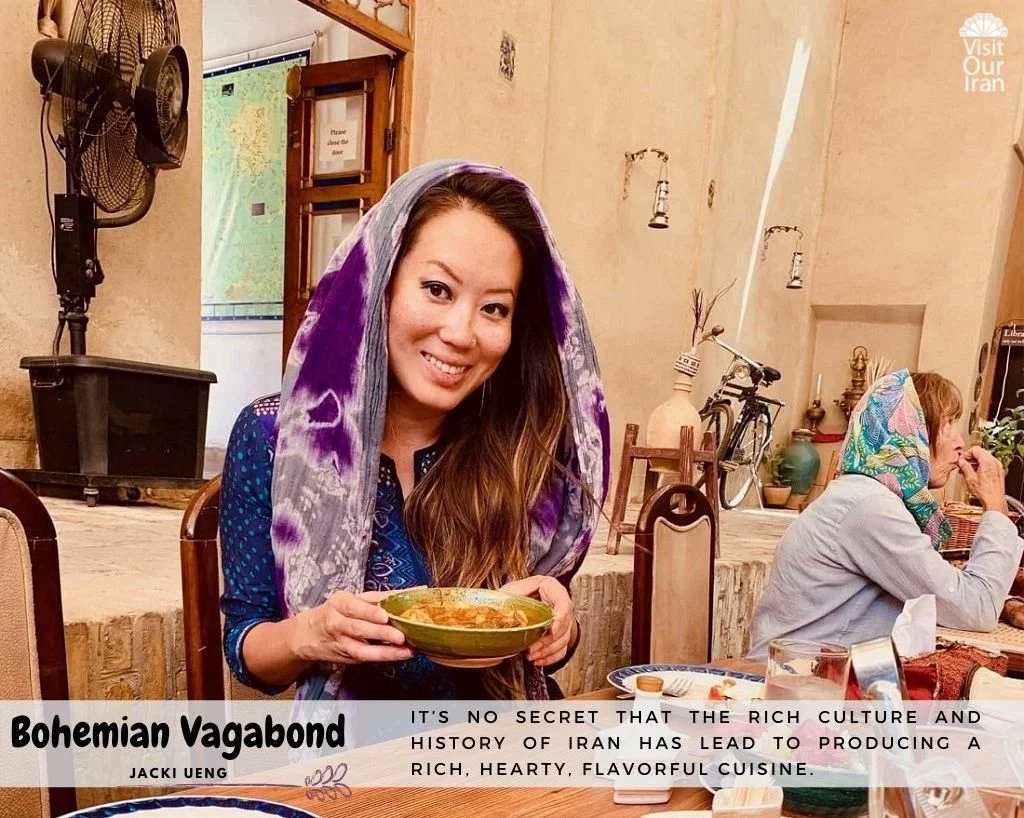
My favorite Persian food here in Los Angeles since we have the largest Iranian population in Westwood, known as “Tehrangeles”, is Beef Koobideh and Ghormeh Sabzi. It was of course even better tasting it in Iran. I had it almost every day. And also took a cooking class in Rasht to learn how to make Ghormeh Sabzi. And the sheep Koobideh from Mashad is absolutely tender and so flavorful. I miss it!
From Jacki Ueng at Bohemian Vagabond
According to Jacki, you’ll definitely miss the taste of Persian cuisine, but cooking it is a whole new chapter. Getting to know all those spices, cinnamon, turmeric, saffron, and learning how to mix them to get that remarkable flavor is one of the skills you’ll learn in a traditional Persian kitchen. Another tasty kebab for Iranians is Joojeh kebab with rice. Some people like Theo prefer white meat over red meat:

I like the roasted tomato with the chicken acres that they sell almost everywhere; it’s so good; it is chicken, yellow rice and roasted tomato; I miss that most on my trip.
From Theo Santana
Iranians are also fond of eggplant, and they feature it in many of their traditional and local dishes. One of these local foods belongs to the northern foothills of the Alborz Mountains, where various local foods extend the gastronomic borders of northern Iran cuisine. Mirza Ghassemi is one of those dishes that has traveled all the way from the tables of the north of Iran to all the dining tables of Iranians. Here’s why Karin and Patrick loved Mirza Ghassemi:

We loved Mirza Ghasemi! This dish consists of mashed, smoked eggplant and tomatoes. Eating it with some freshly baked bread was a dream.
From Karin and Patrick
Are you interested to read more about the travelers’ experiences in Iran? Check out our first diary roundup and learn about the best moments of a journey to Iran through the words of travelers.
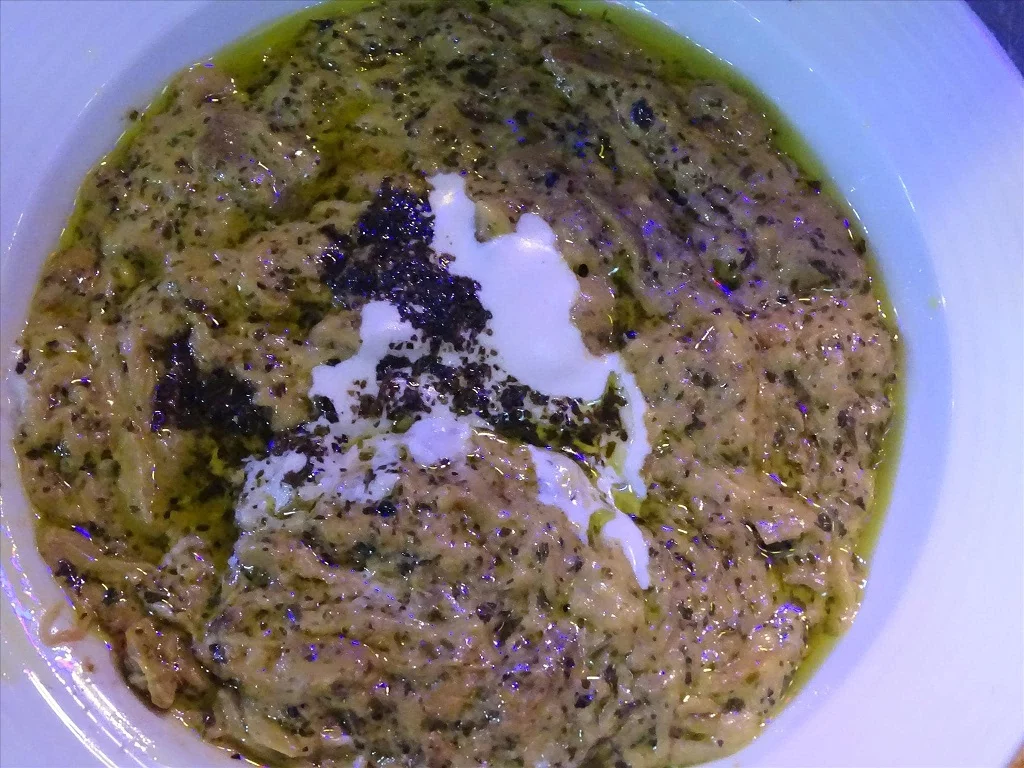
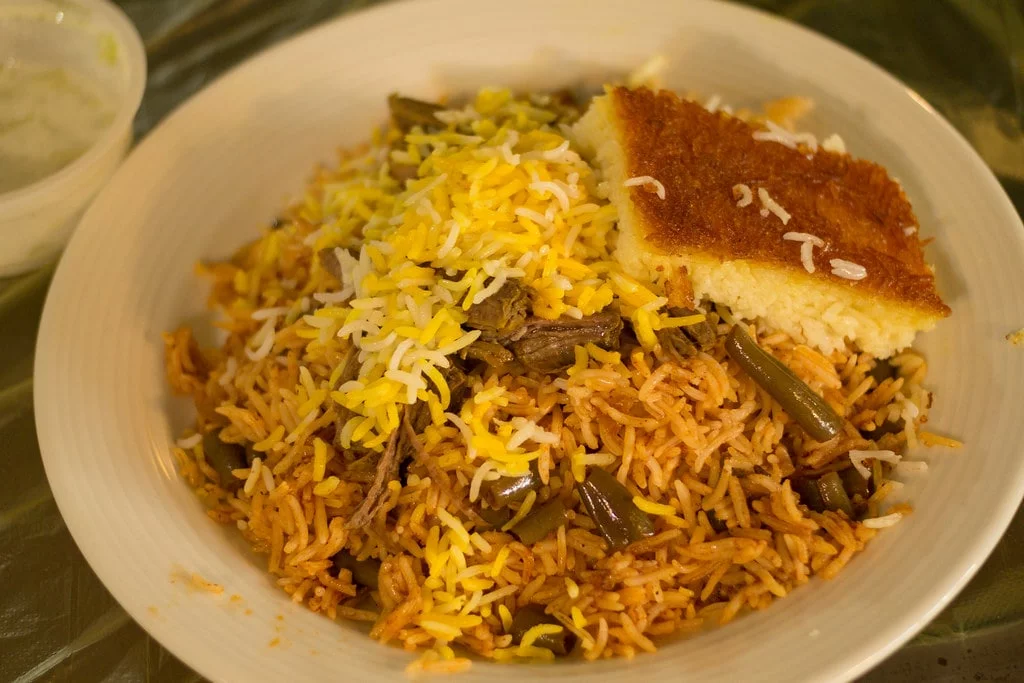
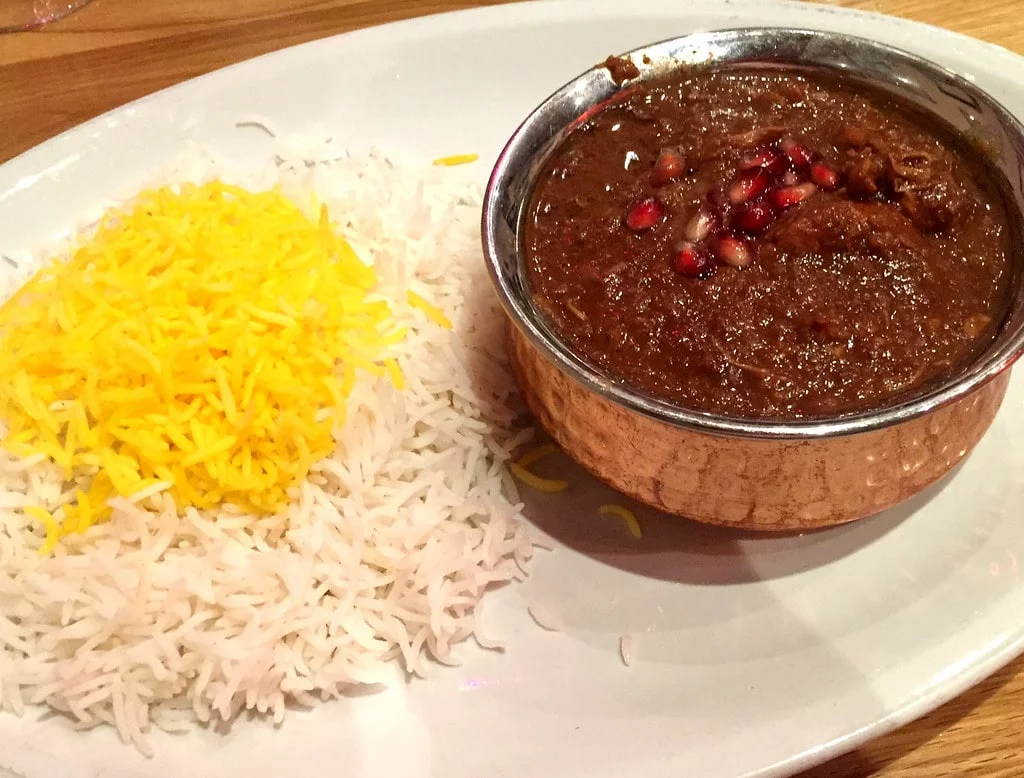
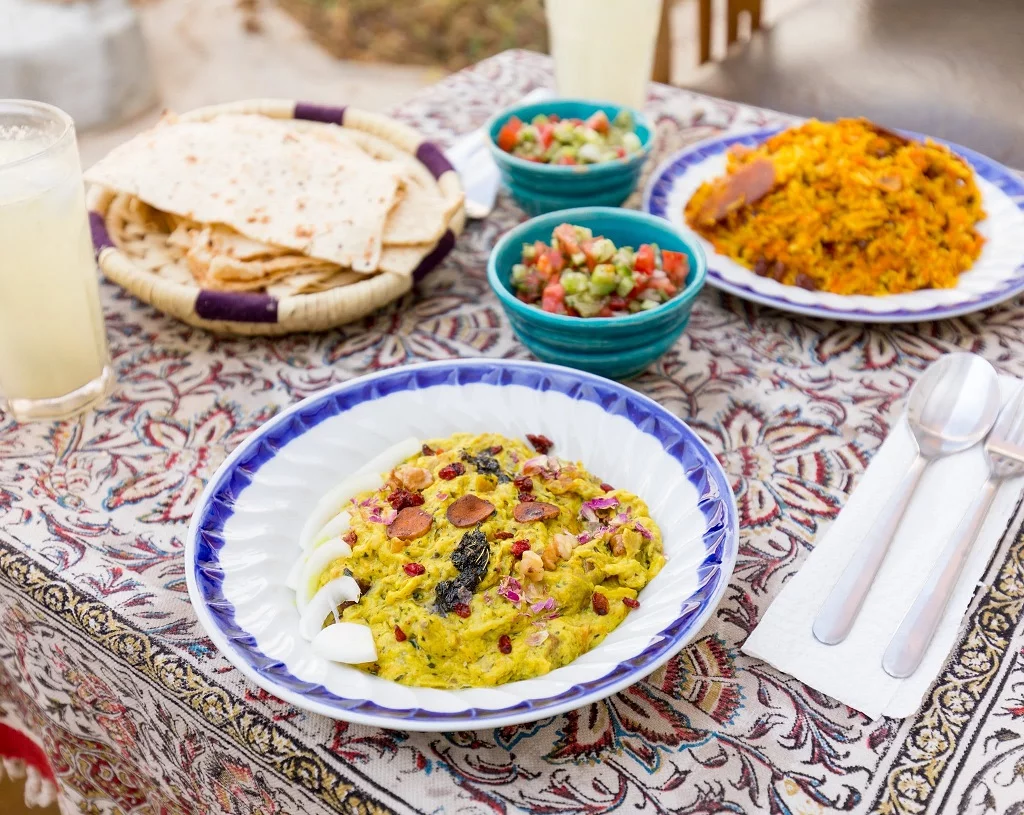
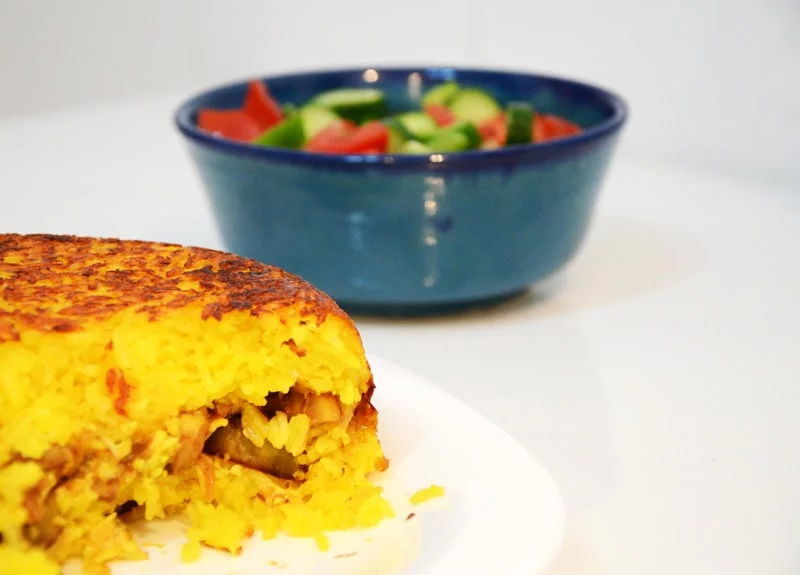
You might think that Persian food is all about meat and kebabs, and so, as vegans or vegetarians, you might feel as desperate as Aimee and Craig when they came to Iran on a Mongol rally. There are many veggie restaurants in the main cities of Iran and you just have to do a bit of research and find them on your google map. Sad to say, Aimee and Craig’s idea of Persian food is as followed:

This is a hard one to answer and both of me and Craig were vegan and because we were on a tour, the majority of people ate meat, so we were taken to some of the best kebab houses where that our friends really enjoyed. Unfortunately we couldn’t eat a lot in those restaurant and ended up with bread and rice usually.
From Craig and Aimee at Kinging-It
This story could be reversed if these two travelers were lucky enough to be introduced to the traditional Iranian foods that are made only with vegetable and veggie ingredients. For a traveler like Sankara, not only being a vegetarian didn’t make him feel miserable, but he turned out to be enjoying the organic, various foods that he explains below. Most travelers believe that there’s a mystery about a simple meal like fresh bread and cheese among Persian meals. How could such simplicity feature joy and delight in each bite along with tomatoes and herbs like basil?
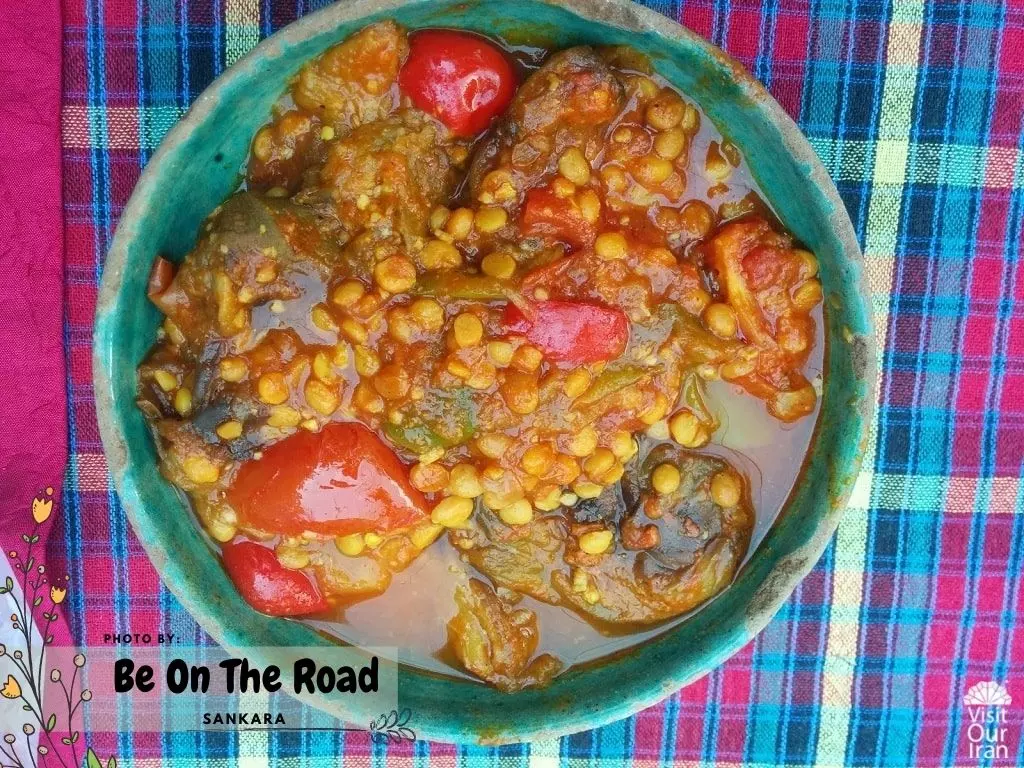
Well, I actually have many favorites and that is in spite of me being a vegetarian. There is certainly way more to Iranian food than its kebabs and meat. Hot Barbari bread from the oven served with fresh Labneh cheese has to be my all-time favorite. It is like comfort food. I also like Mirza Ghassemi, Khorak e-Badamjun (eggplant), Kuku Sabzi, Mast-o-Khiar and many others.
From Sankara at Be On The Road
Yes, you won’t be able to try many main dishes of Persian cuisine if you’re a vegetarian/vegan. But we can say that this tablecloth of tastes includes so many choices that you’re still able to try its highlights. Although Kamila was a vegetarian, she found a specific taste that she had not found anywhere else; something that structured part of her food memory based on her experience in Iran:

I’m a vegetarian so eating in Iran was a bit of a struggle for me but at least there were some eggplant-based dishes that I absolutely loved and ordered them everywhere. My favorite ones were kashk-e bademjan and mirza ghassemi, both dishes were very delicious. I also had to have an ice-cream at least once a day – it was a bit different from what I’m used to but super tasty. I especially liked saffron or rosewater ice-cream since we don’t really have those here.
From Kamila Napora at My Wanderlust
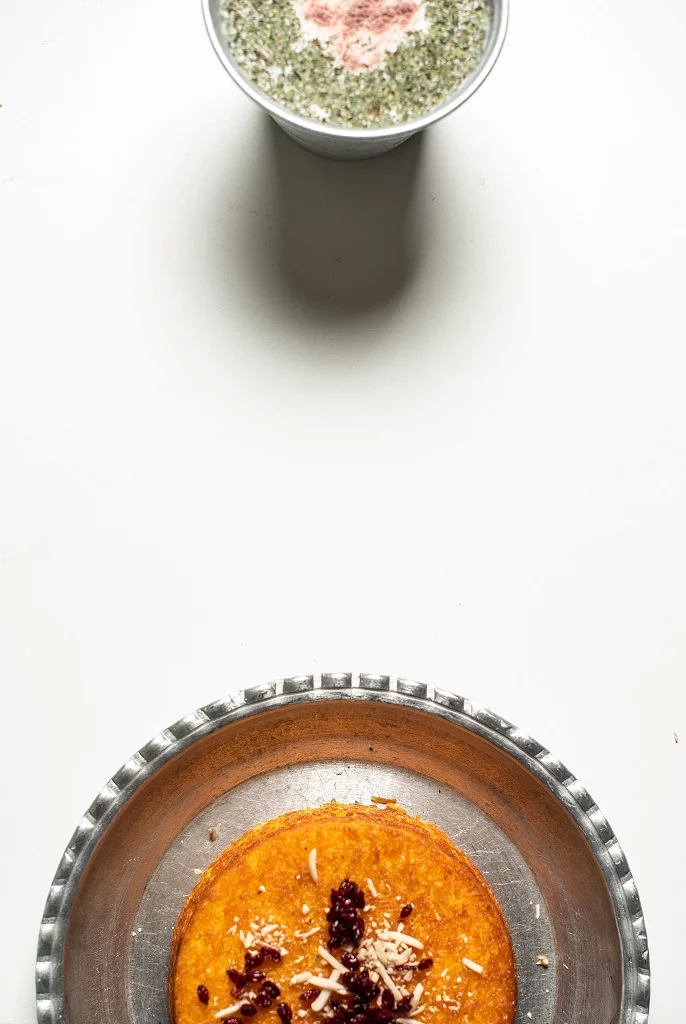
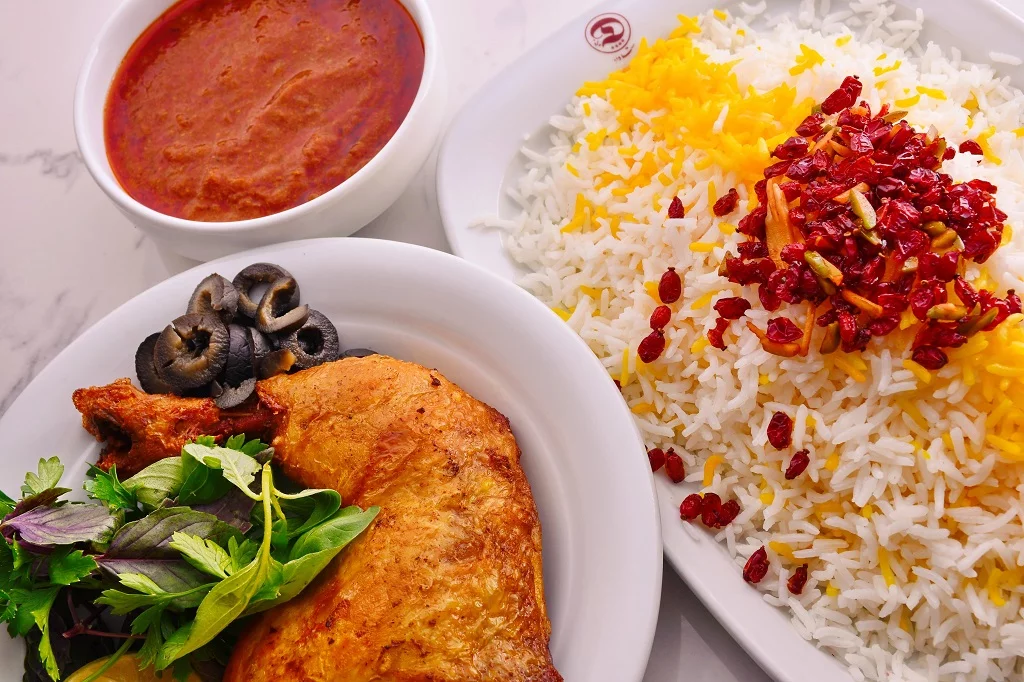
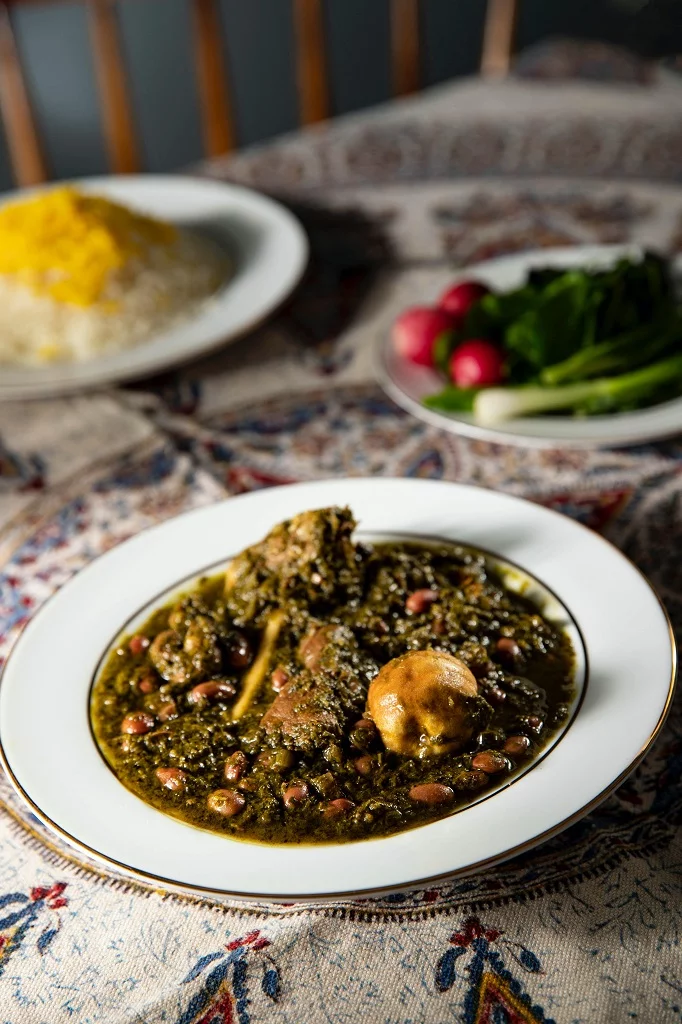
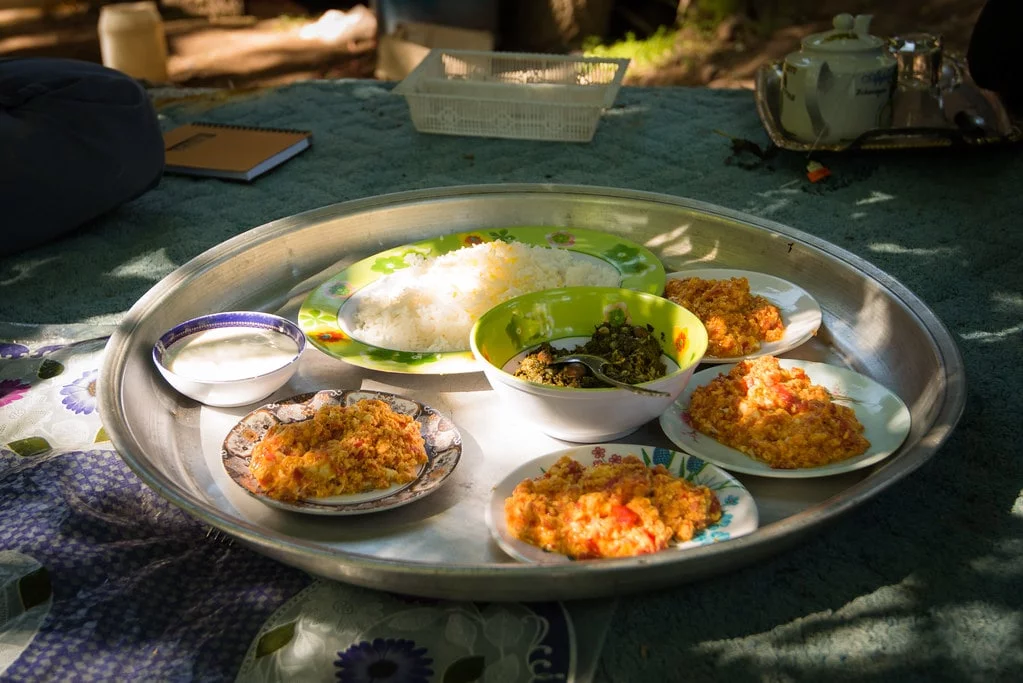
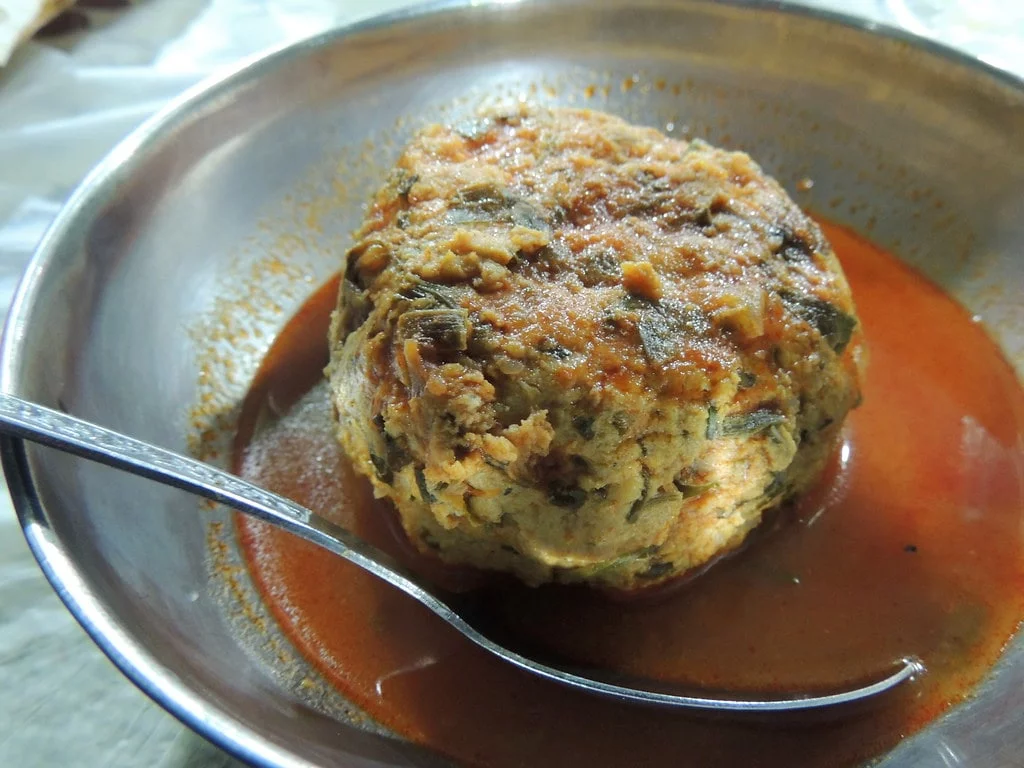
Take your own chance to explore shiraz and discover its flavorful attractions? Check out all of our Food and Culinary Tours and Join us on any of our culinary tours to try the taste of Persian cuisine.
Persian culture puts intimacy and togetherness above everything else. The pleasure of having a meal with Iranians lies in the way they arrange their table and talk about their day in a humorous way to get everyone to laugh and enjoy. Trying a homestay when you travel to Iran turns your memory of eating Persian food into an unforgettable one, regardless of what the food is. Āsh-e Reshteh is a local food made with special noodles and herbs, and here, Alex will tell you why not hesitate to eat such delicious mixture:
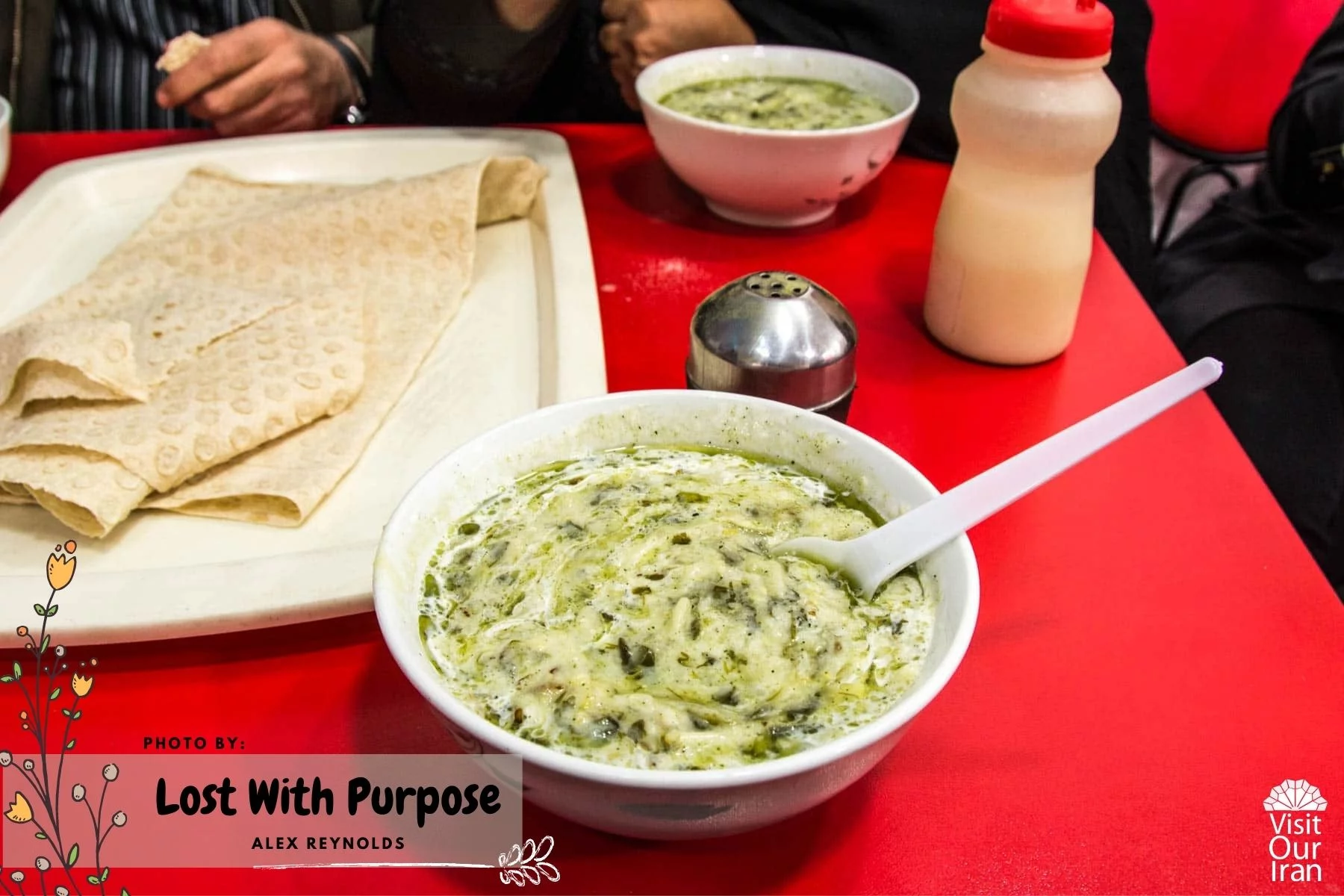
Ash! A local family treated me to it in Tabriz, on one of my first days in the country. The swirling noodles and greenery mixed with yogurt looked strange to me at first, but the moment I tasted it, I was sold. It still brings up warm memories: the comforting heat of the soup, the awe at being treated to such hospitality by a family I’d just met, the relaxed atmosphere sitting outside by the street at night in Tabriz… I remember like it was yesterday.
From Alex Reynolds at Lost With Purpose
Apart from all the various food you might find interesting in Persian food culture, there are also desserts and drinks that you find worth trying. Many Iranians find Tahdig the most delicious part of the meal. The crispy layer of potato chips or flatbread at the bottom of the pan that is yellowed with saffron deceives every hungry belly. Others try Mast-o Khiar, the mixture of local yogurt and cucumber or saffron ice cream. Here’s what Robert told us about his favorite Persian food and his experience of Iranian cuisine:
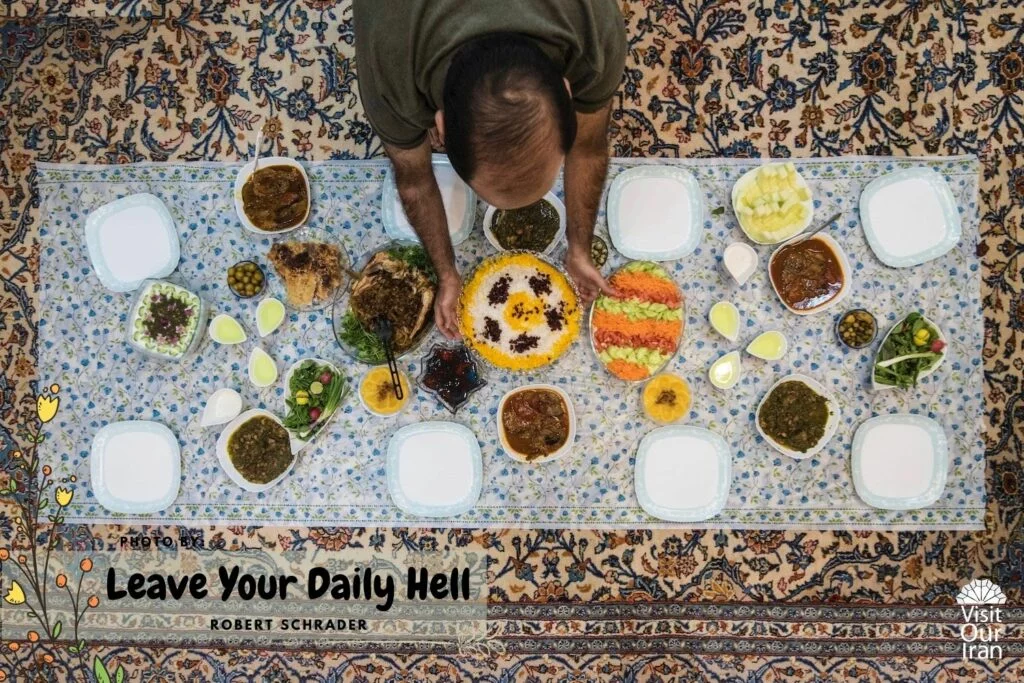
Ghormeh Zabzeh, hands down! I also had a delicious saffron soft-serve ice cream in Shiraz. To be honest, I hardly had any Persian food that wasn’t outstanding!
From Robert at Leave Your Daily Hell
Although everything Robert tried on his visit to Iran tasted outstandingly good, he mentions saffron ice cream as a memorable taste he found in Shiraz. Sweets and pastry are what you’d be treated within all Iranian houses. Baking pastries near Nowruz is a tradition in almost all traditional houses. Iranians love to treat their guests with their homemade pastries and sharbats. Drinks like Doogh and Sharbat are also a part of Iran’s cultural history. David states that you might find tea in many countries, but the way Iranians mix it with saffron or bitter orange blossoms grant it a particular Persian flavor:

Food wise my favorite is the Joojeh Torsh. Closely followed by the Fesenjan. And a shout out to saffron tea and the alcohol free drinks. Those sharbats are so delicious, it should be all over the world.
From David Bakker
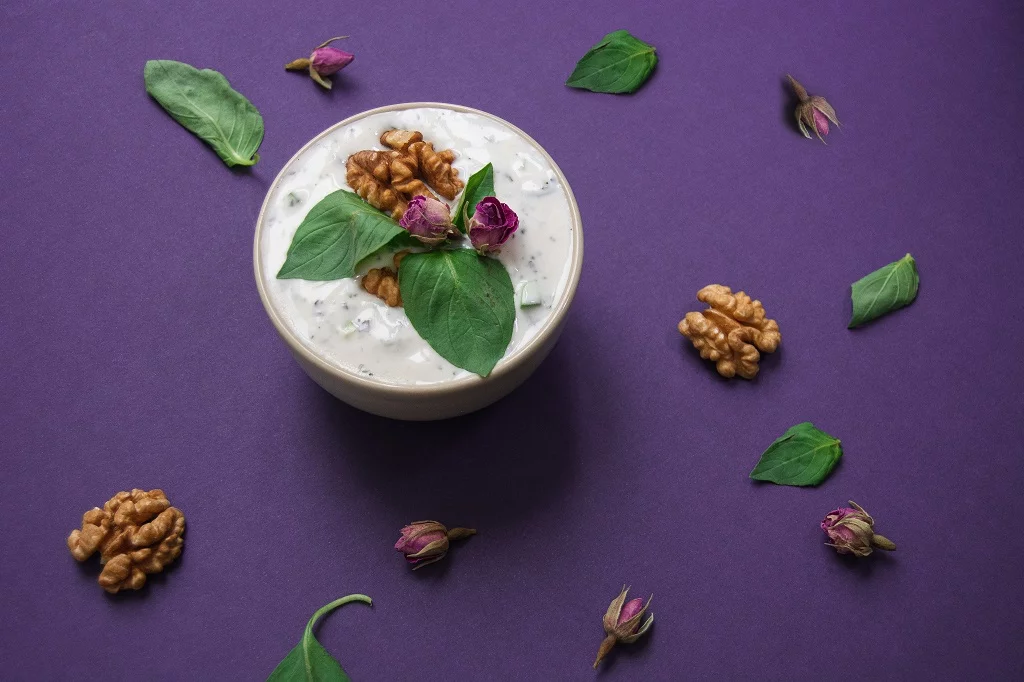
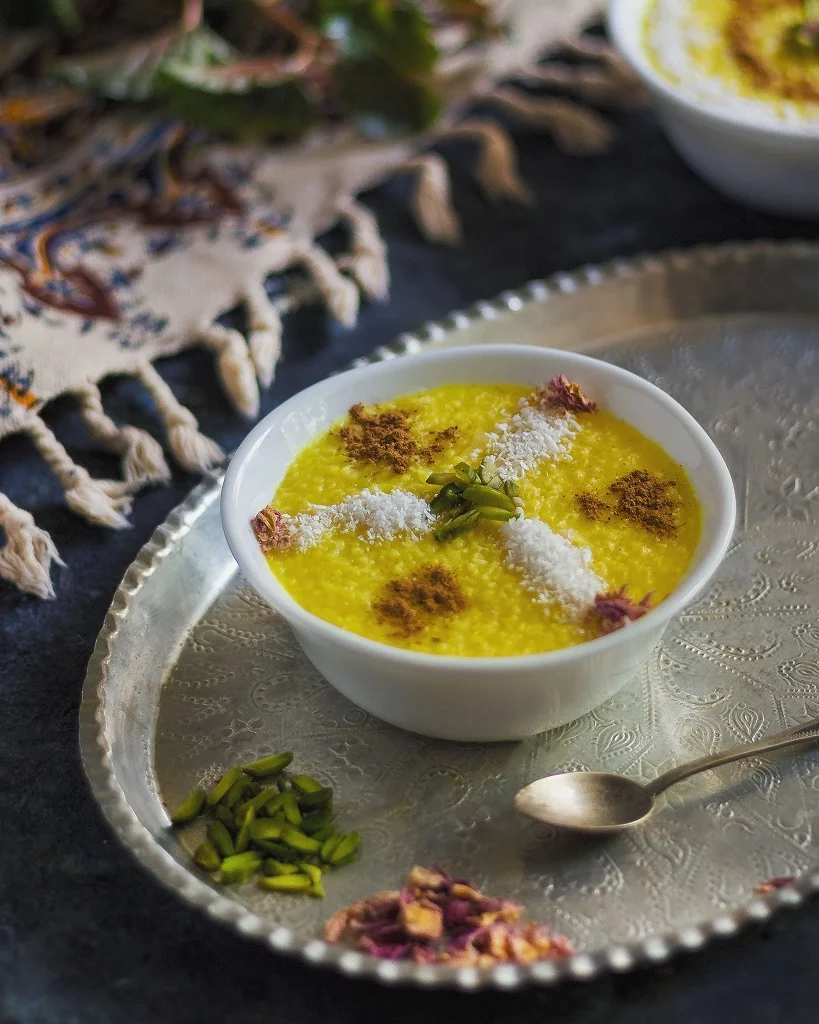
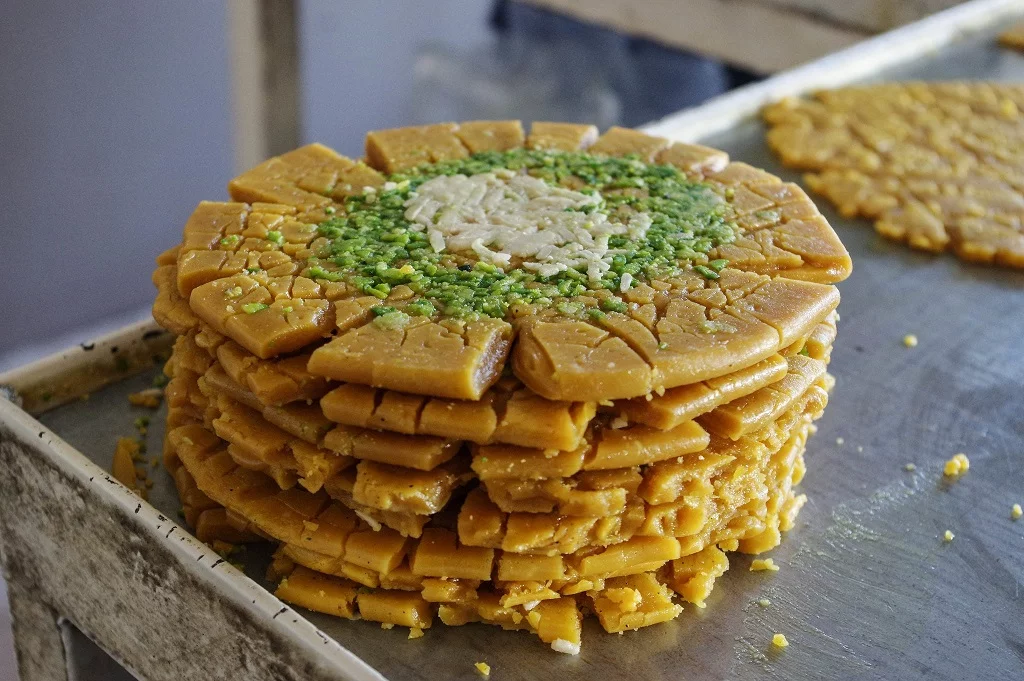
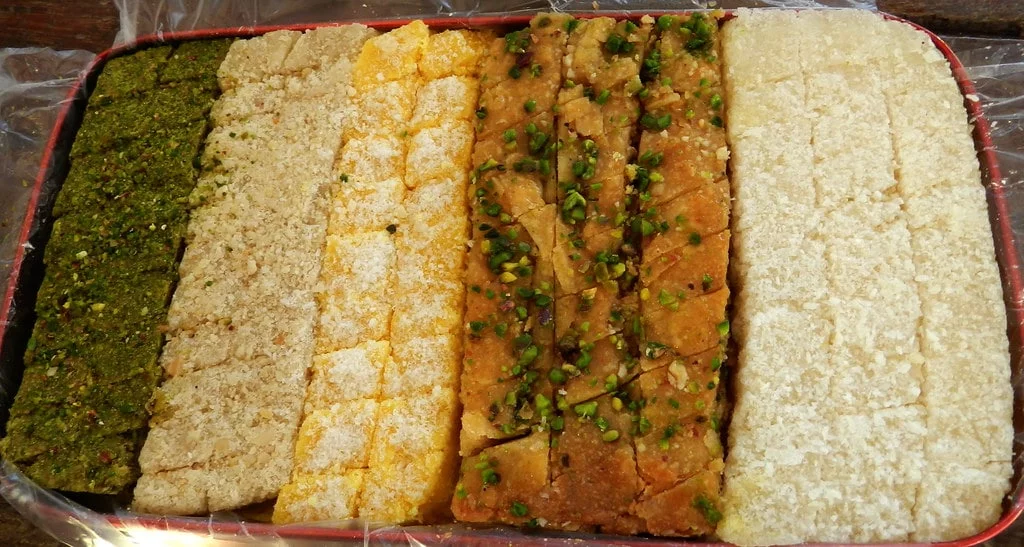
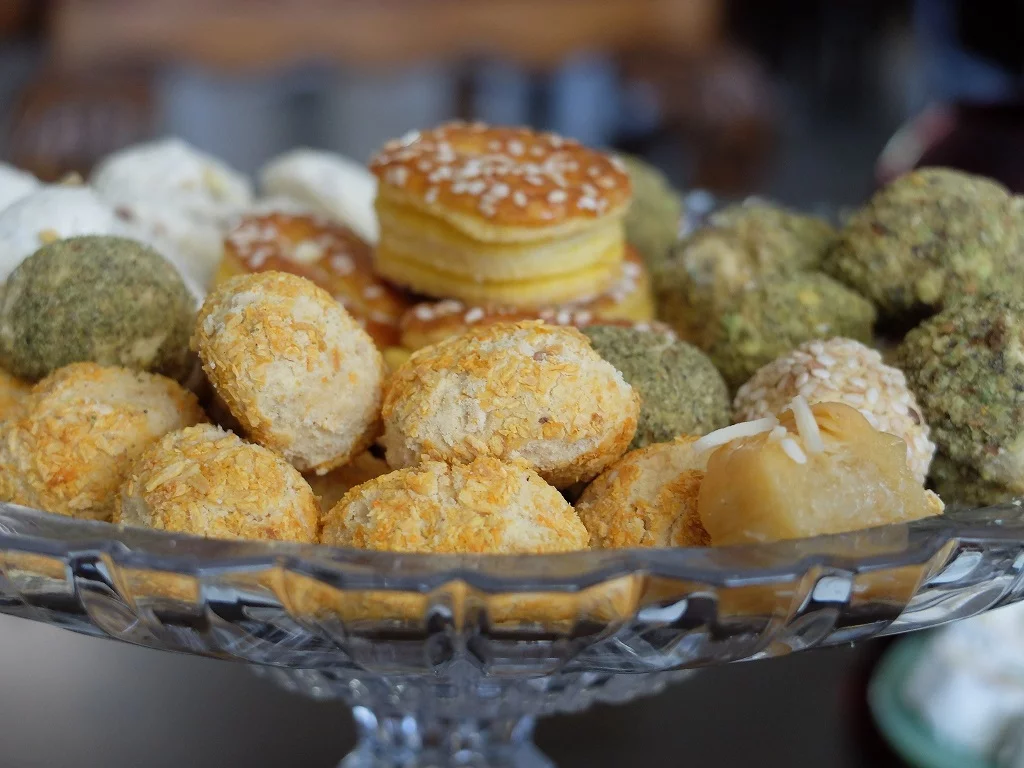
The diversity of the dishes you get to try in your journey to Iran extends beyond the taste of saffron and rosewater, which you might have previously heard of. After all, with such variety comes new experiences that might seem weird and surprising to you at the same time, things that you had not expected. It might happen to you as it happened to Patricia who came across a new different eating experience. Dizy or Abgoosht is one of the traditional Iranian foods that comes to be served in traditional style in many Iranian restaurants:
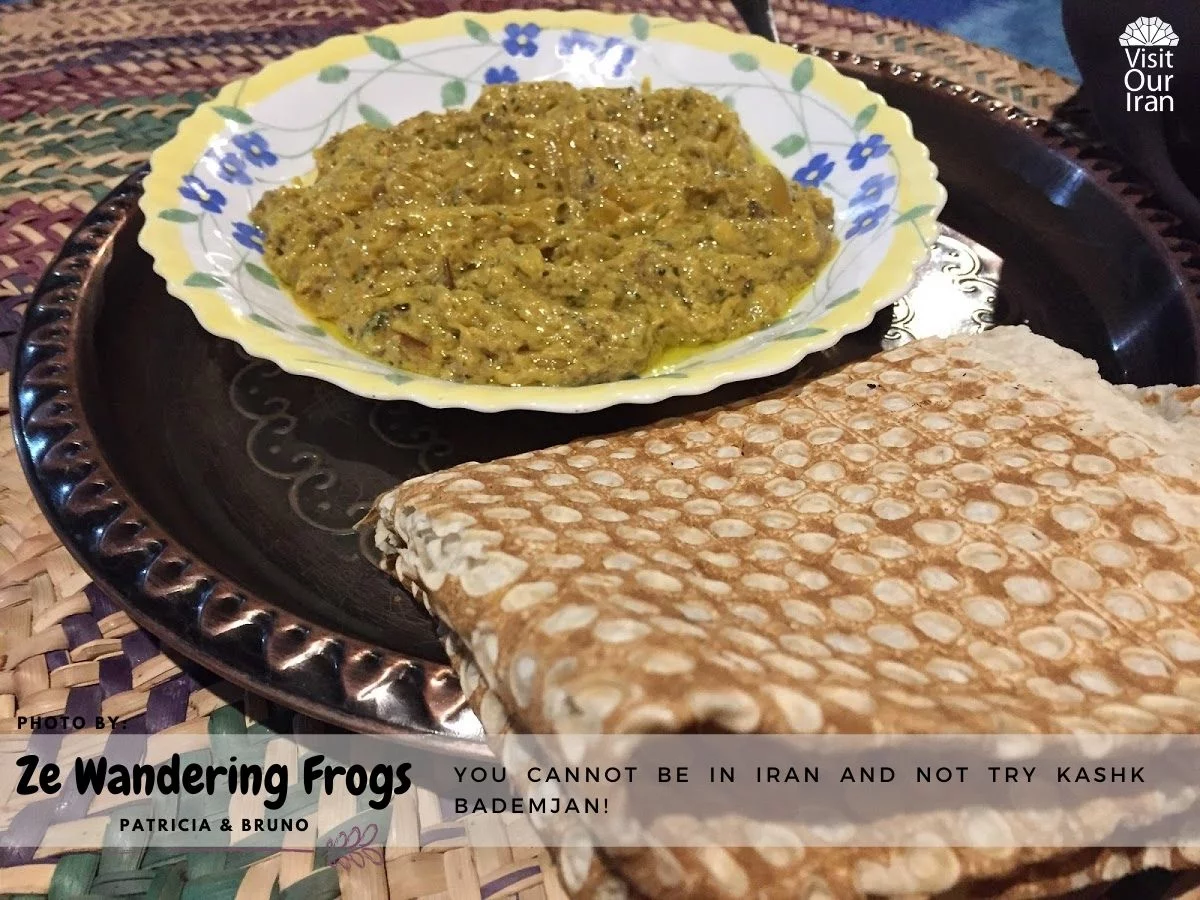
I have to confess we did not know much (nothing would be more accurate!) about Persian food before our trip. Kebabs were a familiar sight, and the meaty skewers available everywhere.
From Patricia and Bruno at Ze Wandering Frogs
One of my favorite food was Kashke Bademjan, a simple yet delicious Persian eggplant dip. Each city, each restaurant has its own version of it, but always yummy! Grab a piece of bread, and dip, dip, dip! Kashke Bademjam was my go-to meal, one I knew I would ever enjoy.
A treat for me was Khoresh-e Fesenjān, a Persian-Style Pomegranate-Walnut chicken stew. The combination of the walnut and pomegranate makes for a rich and flavorful taste, finger-licking for sure! A treat because it’s not available everywhere. Make sure you grab a plate when you find one!
Now, for something unusual, Abgoosht, or Dizi as it is sometimes called, is an Iranian stew where different bits and pieces like lamb, chickpeas, bread, and broth, are served separately before being put together and smashed right before eating. A different eating experience, Iranian-style!
So not one Persian food, but different traditional meals one should try when visiting Iran.
There’s a lot in the Persian menu and one can enjoy all the flavors and tastes and as Inês says, it’s you and your happy belly eventually:
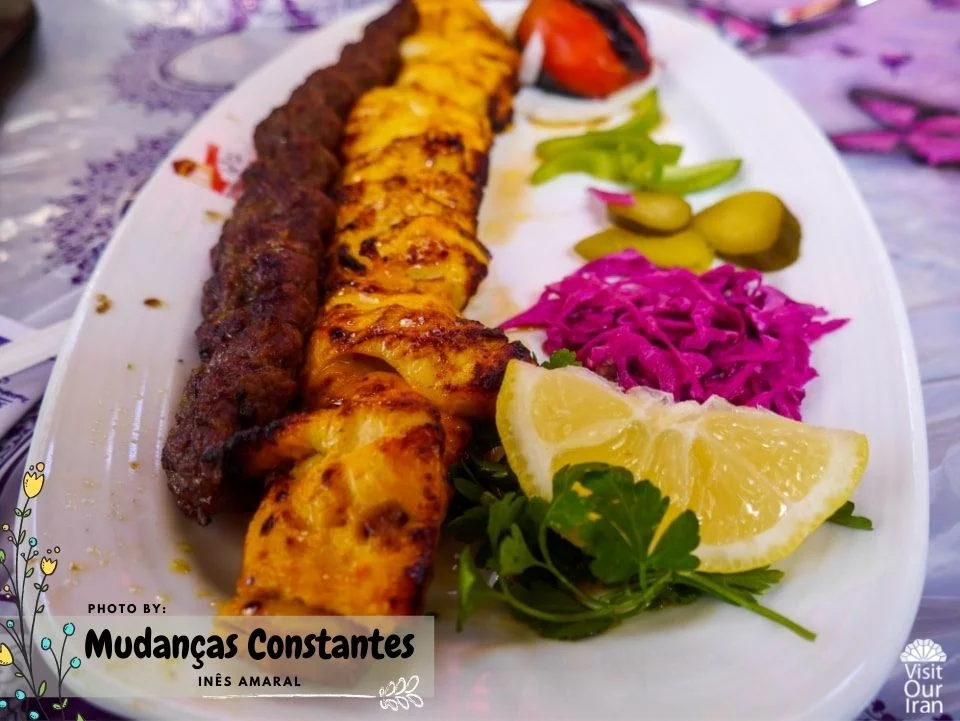
If only I was as good at remembering Persian food’s name as I was eating it… I honestly like all of it. Eggplant stew, kebabs, more eggplants, Persian rice… My belly was always pretty happy (and full) during the time I spent in Iran.
From Ines at Mundancas Constantes
Inês simply suggests that Iran culinary wonders are going to satisfy you with a happy belly, no matter what the food might be. If it’s kebab in a traditional restaurant in Darband or thick stews like Ghormeh sabzi or Fesenjān on the Persian carpet of a rural house, the taste of this meal is what you’ll miss, and the etiquette is what you’ll find memorable. Spend time with locals in the traditional bazaars, smell the spices and ingredients while they’re shopping, enjoy preparing a Persian dish helping them in the kitchen and finally taste the aromatic cuisine of Persia.
